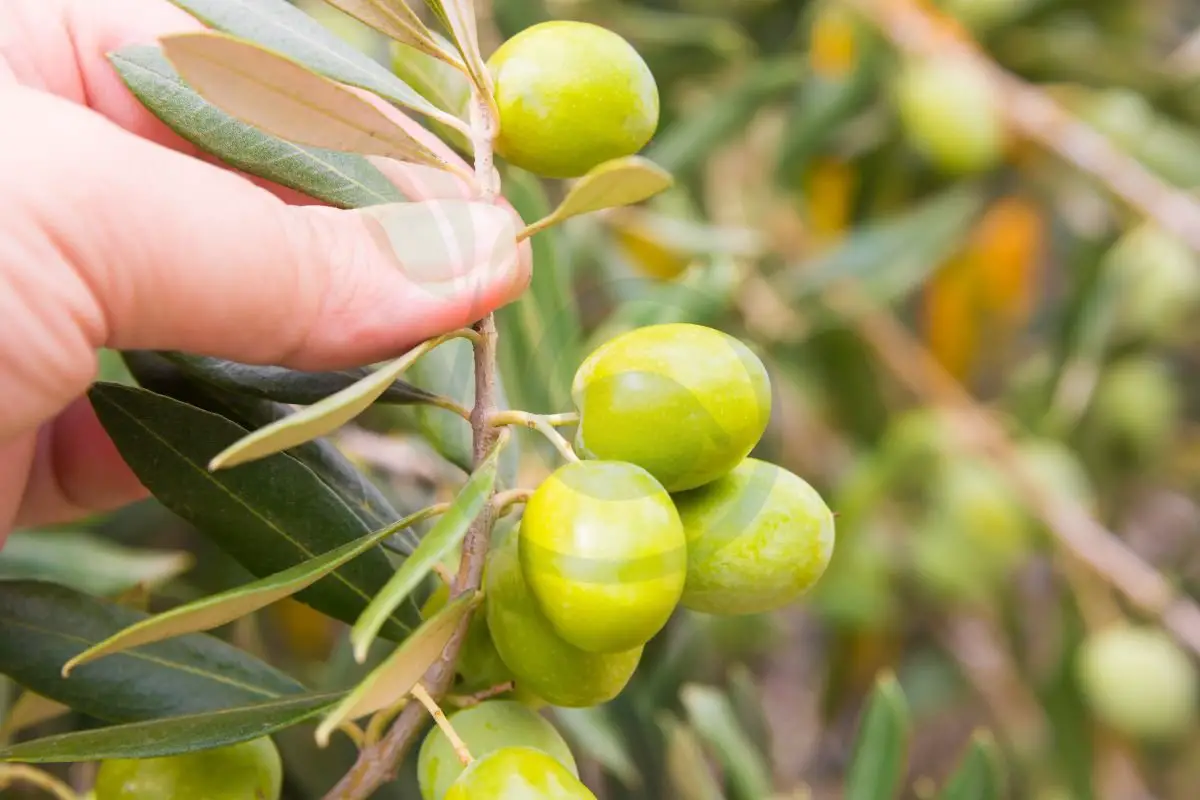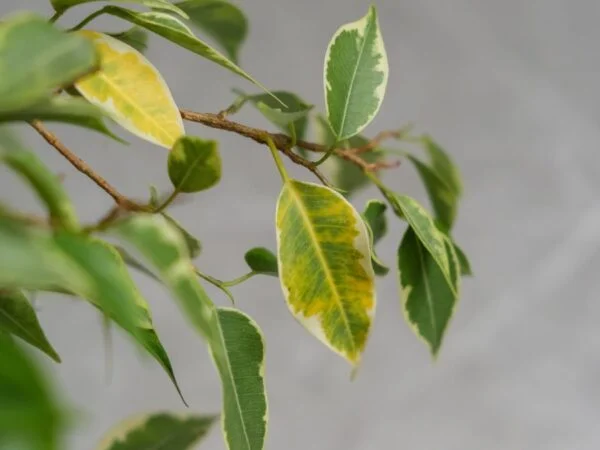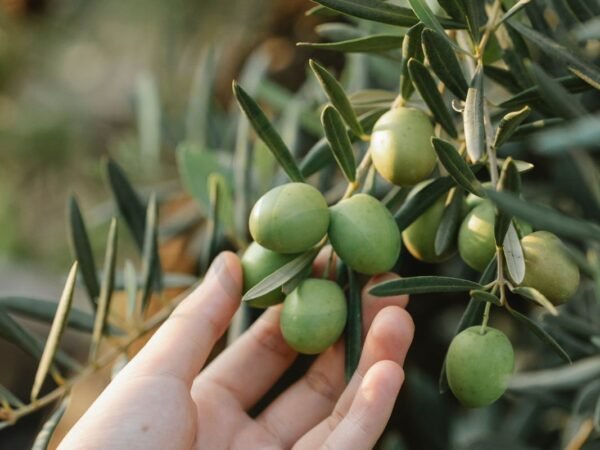Curious about growing an olive tree from a cutting? Imagine nurturing your own thriving olive tree, starting from just a small snippet. It's like witnessing a tiny seed transform into a majestic plant right before your eyes. With the right techniques and care, you can turn that humble cutting into a flourishing symbol of peace and prosperity in your backyard. Ready to dive into the world of propagation and watch nature work its magic? Let's explore the art of cultivating olive trees from cuttings together.
Key Takeaways
- Propagating olive trees from cuttings is a viable method that can be successful with proper care and attention.
- Select healthy and disease-free olive tree branches for propagation to increase the chances of successful growth.
- Prior to planting, ensure the cutting is taken correctly and prepared with rooting hormone for optimal results.
- Following a step-by-step propagation guide will help you navigate the process effectively, increasing the likelihood of a successful outcome.
- Providing optimal conditions such as well-draining soil, sunlight, and regular watering is crucial for the growth of propagated olive trees.
- Regular care and maintenance, including watering, fertilizing, and monitoring for pests and diseases, are essential for the health of propagated olive trees.
Understanding Olive Tree Propagation
Propagation Overview
Olive trees can indeed be grown from cuttings, offering a budget-friendly way to cultivate new trees. This method allows for the retention of specific traits found in different olive tree varieties, ensuring desired qualities are preserved. The success rate of propagating olive trees from cuttings is influenced by several factors, including care and need, impacting the growth and development of the new plants.
Softwood and hardwood cuttings are two common techniques used to propagate olive trees successfully. Softwood cuttings originate from the current season's growth, while hardwood cuttings come from older, woody stems. Employing proper cutting methods such as using sharp and clean tools significantly enhances the likelihood of successful propagation outcomes.
Cutting Techniques
Factors like temperature, humidity levels, and soil conditions play crucial roles in determining how well olive tree cuttings grow. Maintaining optimal moisture levels and providing appropriate nutrition are essential for fostering healthy growth in propagated olive trees. Genetic characteristics inherent in the cutting itself and its compatibility with the rootstock also influence overall growth outcomes.
Pros:
- Cost-effective method.
- Preserves desirable traits.
- Success influenced by various factors
Cons:
- Success not guaranteed.
Examples:
- Softwood vs hardwood cuttings.
- Proper vs improper cutting techniques.
Selecting Olive Tree for Propagation
Selecting the right variety is crucial. Certain varieties, like olea europaea, are more suitable for propagation due to their genetic traits. These varieties often boast good disease resistance and desirable fruit characteristics, making them ideal candidates for successful propagation.
Considering your local climate conditions when choosing an olive tree variety is essential. Varieties that thrive in your specific climate will have a higher chance of successful growth when propagated from cuttings. It's important to select a variety that can adapt well to the environmental factors present in your region.
Healthy parent trees play a significant role in providing high-quality cuttings for propagation. Regular pruning and maintenance practices contribute to the overall health of the tree, resulting in robust and viable cuttings for propagation purposes. Disease-free parent trees significantly reduce the risk of propagating infected cuttings, ensuring better success rates in growing olive trees from cuttings.
Preparing for Propagation
Cutting Selection
To successfully grow an olive tree from a cutting, the first step is selecting healthy and disease-free cuttings. These cuttings should ideally have a diameter ranging from ¼ to ½ inch (0.6 to 1.3 cm). It's crucial that the cuttings show no signs of damage or disease as this can hinder successful propagation. Opting for semi-hardwood or hardwood cuttings that are mature but not overly woody increases the likelihood of these cuttings rooting effectively.
When choosing your olive tree cuttings, remember that healthy and robust specimens are more likely to thrive once propagated. By selecting well-sized and unblemished sections for propagation, you set yourself up for success in growing a new olive tree.
Equipment Needed
For propagating olive tree cuttings, having the right equipment is essential. Basic tools include pruning shears, rooting hormone, pots, and suitable growing medium like perlite or vermiculite mixed with peat moss. Using clean and sharp pruning shears ensures precise cuts on selected branches without causing unnecessary damage which could impede growth later on in the process.
Rooting hormone plays a critical role in stimulating root development in your chosen olive tree cuttings during propagation. This helps encourage healthy root growth early on, setting the stage for strong and resilient plants down the line.
Step-by-Step Propagation Guide
Cutting Preparation
When propagating an olive tree from a cutting, it's crucial to prepare the cutting correctly. Remove leaves from the lower part of the cutting to prevent excessive moisture loss. Make a clean cut just below a leaf node; this helps in promoting root development. Applying rooting hormone at the base can enhance root formation significantly.
The preparation stage sets the foundation for successful propagation. By removing excess leaves and using rooting hormone, you're giving your olive tree cutting its best chance at developing strong roots.
Rooting Process
After preparing the cuttings, it's time for the rooting process. Place them in a suitable growing medium and ensure high humidity levels around them to facilitate root development. Remember that patience is key; it might take weeks or even months for roots to form on your cuttings.
During the rooting process, maintaining optimal conditions like high humidity levels will encourage root growth on your olive tree cuttings. Be patient as roots develop gradually over time before progressing to planting.
Planting Cuttings
Once your olive tree cuttings have rooted successfully, they are ready for planting either in individual pots or directly in the ground. Ensure proper spacing between each cutting to allow healthy growth and airflow around them. Protect newly planted cuttings from extreme weather conditions and provide support if needed.
When planting rooted olive tree cuttings, spacing is essential for their healthy development since overcrowding can hinder growth potential and airflow circulation necessary for their well-being.
Optimal Conditions for Growth
Soil Requirements
Olive trees thrive in well-draining soil with a pH level ranging from 6 to 8. Sandy loam or loamy soil types provide the ideal growing environment for olive tree cuttings. Enhancing the soil with organic matter can boost its fertility and drainage properties, aiding in optimal growth conditions.
When cultivating olive tree cuttings, it's crucial to maintain regular watering initially to help establish their root systems. However, be cautious not to overwater as this can lead to root rot and other detrimental issues. Once the olive trees are established, they display drought tolerance but still benefit from periodic deep watering sessions.
Watering Needs
Proper sunlight exposure is essential for the successful growth of olive trees. These plants flourish when exposed to full sun, requiring a minimum of six hours of direct sunlight daily. Sufficient sunlight not only fosters healthy growth but also enhances fruit production in olive trees. Inadequate sunlight exposure may result in stunted growth and reduced yields.
Care and Maintenance
Regular Watering
Olive trees require regular and deep watering, especially during dry spells. Deep watering helps roots grow strong and tolerate drought better. Shallow watering should be avoided to prevent shallow root development. To illustrate, imagine giving a thirsty plant a small sip versus a satisfying drink that reaches its roots.
Their watering needs are crucial for their overall health. Providing adequate water allows the tree to thrive in various conditions by establishing robust roots that can withstand periods of little rainfall. Remember, consistency is key.
Fertilizing Schedule
While olive trees have modest nutrient requirements, they can benefit from balanced fertilizers occasionally. Applying fertilizer at the right time is essential for optimal growth; early spring or late winter before new growth appears is ideal timing for fertilization. Be cautious not to overdo nitrogen-based fertilizers as they might hinder fruit production.
Focusing on the fertilizing schedule ensures your olive tree receives necessary nutrients without overwhelming it with excessive nitrogen levels which could negatively impact its ability to bear fruits effectively. Balancing the nutrients will help maintain the health and productivity of your olive tree over time.
Disease Prevention
Maintaining proper sanitation around your olive trees is vital in preventing diseases from taking hold. Removing fallen leaves promptly and pruning infected branches are effective ways to keep diseases at bay. Regularly inspecting your trees for any signs of pests or diseases enables you to take swift action if needed.
Pruning Propagated Olive Trees
Pruning Basics
Pruning helps maintain olive trees' shape and boosts fruit production. Regularly remove dead or diseased branches to prevent disease spread. It's best to prune during the dormant season to reduce stress on the tree.
Olive trees benefit from proper pruning practices, enhancing their health and productivity. By eliminating dead or diseased branches regularly, you can prevent diseases from spreading throughout the tree. Pruning during the dormant season is crucial as it minimizes stress on the tree.
Best Practices
To ensure optimal growth of young olive trees propagated from cuttings, adhere to essential cultural practices. Proper irrigation, fertilization, and pest control are key for healthy tree development. Monitoring soil moisture levels prevents overwatering or underwatering issues that can harm young olive trees.
Maintaining a weed-free zone around newly propagated olive trees is vital in reducing competition for nutrients and promoting their healthy growth. By following these best practices diligently, you provide an ideal environment for young olive trees propagated from cuttings to thrive.
Common Propagation Issues
Identifying Problems
Inspecting your olive trees for common issues is crucial to their health. Look out for pests, diseases, and nutrient deficiencies that can affect their growth. Regularly check the leaves, branches, and fruits for any abnormalities or signs of distress. Seek professional advice if you are unsure about identifying or treating specific problems.
To ensure your olive trees thrive, address any pest infestations promptly using suitable insecticides or biological controls. Treat diseases with recommended fungicides or other targeted treatments to prevent them from spreading further. Nutrient deficiencies can be corrected by amending the soil or applying specific nutrients directly onto the leaves.
Remedying Issues
Identifying problems early on allows you to take immediate action to remedy them effectively. By staying vigilant and proactive in addressing these issues, you can help your olive trees grow strong and healthy. Remember that prevention is key.
Regularly monitoring your olive trees' health will enable you to catch any potential problems before they escalate into more significant issues that could harm the overall growth of the tree. By implementing appropriate solutions promptly, you can ensure a thriving garden filled with lush and vibrant olive trees.
Beyond Propagation
Long-term Care
Taking care of an olive tree from a cutting involves ongoing maintenance. It is crucial to regularly check the tree's growth, prune when necessary, and promptly address any issues that arise. By maintaining a balanced fertilization and watering schedule tailored to the tree's specific needs, you can ensure its long-term health.
Consistent monitoring of the olive tree's growth is essential for its well-being. Pruning should be done as needed to promote healthy development and productivity. Promptly addressing any problems that may arise, such as pests or diseases, can prevent them from affecting the tree's overall health.
Maximizing Yield
To maximize the yield of olives from a cutting-grown tree, ensuring optimal growing conditions is key. Proper pruning techniques play a significant role in promoting higher yields by encouraging fruit production on the tree. Adequate sunlight exposure is vital for healthy growth and better fruit output.
Spacing between olive trees also impacts their yield potential significantly. Providing enough room between trees allows each one to receive ample sunlight and nutrients for optimal fruit production. Harvesting olives at just the right stage of ripeness ensures maximum yield and high-quality fruits ready for processing.
You've now grasped the ins and outs of growing olive trees from cuttings. Remember, selecting the right tree, preparing meticulously, and providing optimal care are key to success. With the step-by-step guide and tips on maintenance and troubleshooting, you're equipped to embark on this propagation journey confidently.
Now it's your turn! Roll up your sleeves, get your hands dirty, and start propagating those olive trees. The world of gardening is waiting for your green thumb to work its magic!
Frequently Asked Questions
Can I grow an olive tree from a cutting?
Yes, you can! Olive trees can be propagated successfully from cuttings. It's a rewarding process that allows you to create new trees with desirable traits. Follow the proper steps for best results.
What are the optimal conditions for growing olive trees from cuttings?
For successful growth, provide well-draining soil, ample sunlight, and regular watering without waterlogging the roots. Keep the humidity levels stable and protect the young plants from extreme temperatures.
How do I care for propagated olive trees?
Regularly check moisture levels in the soil and adjust watering accordingly. Provide nutrients through balanced fertilization and monitor for pests or diseases. Prune as needed to promote healthy growth and shape your tree.
What are common issues encountered during olive tree propagation?
Common problems include root rot due to overwatering, poor rooting of cuttings, or fungal diseases affecting young plants. Ensure proper sanitation practices when handling equipment to prevent contamination.
Is pruning necessary for propagated olive trees?
Pruning is essential for shaping your tree's structure, promoting air circulation, and removing dead or diseased branches. Regular pruning encourages new growth and helps maintain overall plant health.
Image Source: Paid image from CANVA




